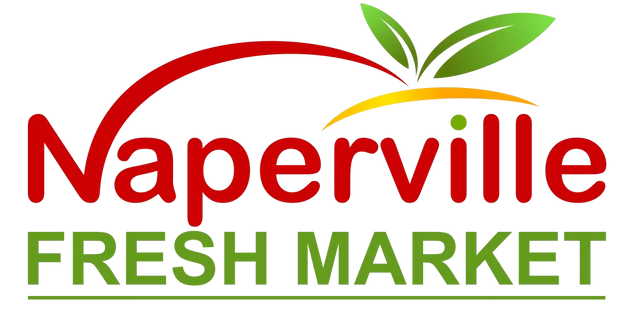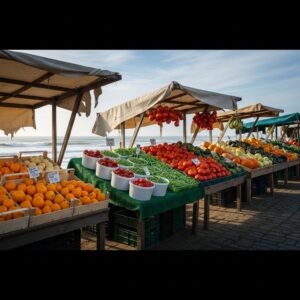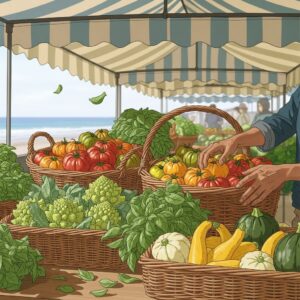In Malibu, distance is measured less in miles and more in minutes—minutes that stretch or shrink depending on the surf report, canyon winds, and those unexpected slowdowns on the PCH. That’s why delivery has become an everyday tool rather than a luxury. Whether you’re perched above the water in Big Rock, tucked into a canyon off Latigo, or out near Point Dume with sand in your shoes, getting groceries to your door can be the difference between a peaceful evening and a frantic dash. The good news is that Malibu’s delivery landscape has matured, with in‑house services, third‑party platforms, and curbside pickup all fitting together so you can choose what works best. If you like to build a cart around what’s fresh right now, peeking at timely weekly deals can also shape your delivery list before you schedule the drop.
Let’s start with geography. Malibu’s long spine means delivery distances can be meaningful, and canyon roads add character to routes. Malibu Canyon, Kanan Dume, Encinal, Decker, and Corral each have curves and elevations that reward patient driving. On breezy days or after rain, drivers may slow to take care; that can push delivery windows, so keep a loose plan for dinner. If your home is behind a gate or up a private road, adding clear notes about access, parking, and where to leave bags makes everything smoother.
Choosing the delivery style that fits your life
There are three broad styles in Malibu. First, many markets offer their own in‑house delivery, sometimes staffed by people who know the aisles well and can pick produce as if they were shopping for themselves. Second, third‑party platforms knit together multiple stores and dispatch professional shoppers who know how to communicate substitutions and special requests. Third, curbside pickup splits the difference—you order ahead, swing by when traffic is kind, and a staff member loads the car while idle time is minimal.
In‑house delivery can shine when you have specific preferences. If you want firm avocados for later in the week, a certain thickness of sliced deli meat, or a fish fillet portioned for a specific recipe, these teams are used to fielding those details. Third‑party services excel at speed and convenience, sometimes offering tighter windows or late‑evening options. Pickup is perfect if you’re passing by anyway and want to control timing, avoid minimums, and still ensure you’re getting exactly what you ordered.
Coverage, timing, and coastal realities
Coverage varies. West of Point Dume and out to Trancas, some services operate on slightly broader windows. East Malibu, closer to the canyons and city access, can offer more flexibility. If you’re high in the hills or well off the highway, expect a bit of extra buffer in estimates. Fog, wind, and the unexpected film crew or utility work can nudge timing. Build a small margin into your plan—snacks, a pantry pasta, or a simple salad you can assemble quickly if dinner drifts later.
Communication is your best tool. Use delivery notes to describe landmarks, gate codes, and where to leave perishables if you’re not home. If cell service flickers where you live, consider offering a preferred backup plan: “Leave at the shaded bench by the front door” or “Call this landline if the gate box doesn’t ring.” Clear instructions reduce re‑routes and keep your produce happy.
Packaging and freshness in a coastal climate
Malibu’s microclimates are kind to people but tricky for groceries. Cold fog rolls in, then the sun opens; afternoons can be warm even when the ocean breeze feels cool. Ask for insulated packing on items that need it—greens, dairy, seafood—and include a note for ice packs if you know your order will sit for even a short while. On your end, have a clear countertop ready. Delivery goes fastest when there’s a landing spot for bags and you can scan perishables immediately.
For produce, consider specifying ripeness. If you want tomatoes that can wait two days, say it. If you’re making ceviche tonight, request firm, bright limes. For bakery items, a quick “no sliced bread” note keeps loaves crusty for a day at the beach and sandwiches later. Malibu cooks often favor simple menus fueled by high‑quality ingredients; delivery can match that standard if you give your shopper a few guardrails.
Substitutions, communication, and special requests
The best delivery experiences feel collaborative. Most platforms allow you to approve or decline substitutions and message with your shopper. If an item is out, think recipe flex: arugula can swap for spinach, halibut for another white fish, or a different brand olive oil can carry the same dish. When the store itself handles delivery, phone calls or texts from staff can be even more personal. Malibu markets often pride themselves on service—lean into that, and you’ll get results that feel close to your own hand‑picked shop.
Special requests are worth making. If you want seafood skinned and portioned, produce packed by type, or a cake boxed with candles taped to the lid, ask. Clear, concise notes are appreciated, and gratitude goes a long way—both in the app and in person if you’re receiving the order at home.
Windows, schedules, and those canyon detours
Delivery windows in Malibu tend to be realistic reflections of distance and demand. Morning can be excellent for perishables and accuracy, midday is efficient if you’re home to receive items, and evening can be surprisingly smooth—especially on weeknights outside summer. If you live behind a gate that closes automatically, remember to monitor the line during your window so drivers aren’t waiting outside. If your area is prone to temporary closures, consider pickup when you know the PCH will be clear on your route; it’s sometimes the fastest option.
When a window runs late, consider the weather. If the sun is strong, bring in bags quickly or transfer cold items to the fridge first and review the rest later. If fog or cool air sets in, prioritize bread and greens so they don’t absorb dampness. A small bit of triage keeps quality high even if timing slides.
About fees and value without getting lost in details
Each service structures fees differently, and Malibu’s geography can influence them. Rather than hunting specifics each time, decide what matters for you: speed, precision in picking, wide selection, or a combination. Some services reward larger orders with proportionally lower add‑ons, while others excel at quick, smaller runs. You can also consider a hybrid approach—one larger weekly delivery for staples and a smaller midweek pickup when you’re already near the store. Over time you’ll find your personal sweet spot where convenience and quality meet your expectations.
Promotions can subtly rebalance decisions. If a store is highlighting seasonal produce or pantry staples, that can tip you toward one service or another for that week’s order. A quick glance at current weekly deals can cue your cart toward what’s shining now, while your delivery choice handles the logistics.
Security, access, and the last ten feet
Homes in Malibu are varied: coastal condos, hillside retreats, beach bungalows, gated compounds. Let your delivery team know how to approach yours. A note about stairs, dogs, or a sensitive doorbell helps. If you prefer contactless delivery, say so and indicate a safe, shaded spot for bags. If you’re in a shared building, mention the unit and entry details and whether a concierge or neighbor can receive the order if you’re briefly out.
For those living up private roads, think about visibility at night. A porch light or a quick message to confirm the approach can transform a stressful arrival into a smooth hand‑off. Most drivers appreciate clarity, and you’ll appreciate groceries that arrive on time and in good shape.
Making delivery part of a Malibu routine
Consider a weekly cadence. A consistent slot—say, early in the week after the weekend bustle—can align with fresh restocks and give you a baseline for meal planning. Then a small, flexible add‑on toward the end of the week keeps the fridge relevant to your cravings. That rhythm lets you shop less impulsively while staying open to what looks best.
Keep a standing list of household essentials so you don’t forget basics when the cart is filled with surf snacks and seasonal fruit. And designate a shelf for incoming items to simplify storing. The more you treat delivery like a reliable ritual, the better it supports the flow of your days.
FAQ: Delivery in Malibu
Q: Do most Malibu addresses get delivery?
A: Coverage is broad, but canyons and private roads may extend windows. Check your address before building a cart, and use notes to improve access. Pickup can be a smart backup if your spot is tricky on certain days.
Q: How do I keep perishables safe if I’m not home?
A: Ask for insulated packing, leave a shaded drop‑off spot, and bring items inside promptly. Prioritize fridge and freezer goods first, then review the rest.
Q: Can I control ripeness and substitutions?
A: Yes. Use notes to specify ripeness and approve substitutions in the app. In‑house teams and good shoppers appreciate clarity and aim to match your preferences.
Q: What should I do if a delivery is running late?
A: Communicate with the driver, adjust your plan, and triage items on arrival—cold goods first, greens next, pantry last. Most delays resolve smoothly with a little flexibility.
Q: How do fees typically work?
A: Structures vary by service, distance, and demand. Focus on value: accuracy, convenience, and quality. Over time, you’ll learn which option suits your household and when pickup is the easier play.
Bring the market to your door
Delivery in Malibu works best when you treat it like a partnership: clear notes, realistic windows, and preferences that guide good picking. Keep your pantry steady, let seasonal produce lead, and lean on services when the PCH asks for patience. If you want a nudge toward what to order this week, browse weekly deals and shape your cart around what’s shining. Then exhale, listen to the ocean, and enjoy dinner arriving just the way you like it.



